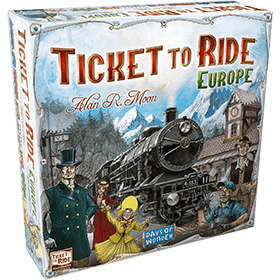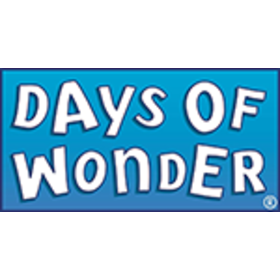Ticket to Ride: Europa TTR, TTRE
 Das encostas escarpadas de Edimburgo às ensolaradas docas de Constantinopla, das vielas empoeiradas de Pamplona a uma estação varrida pelo vento em Berlim, Ticket to Ride Europe leva você a uma emocionante aventura de trem pelas grandes cidades da Europa da virada do século.
Das encostas escarpadas de Edimburgo às ensolaradas docas de Constantinopla, das vielas empoeiradas de Pamplona a uma estação varrida pelo vento em Berlim, Ticket to Ride Europe leva você a uma emocionante aventura de trem pelas grandes cidades da Europa da virada do século.
Número de jogadores: 2 - 5
Duração do jogo: 13 mn
Complexidade: 2 / 5
Jogue Ticket to Ride: Europa e 1194 outros jogos online.
Sem downloads, direto no seu navegador.
Com seus amigos e milhares de jogadores do mundo inteiro.
Grátis.

Jogue Ticket to Ride: Europa e 1194 outros jogos online.
Sem downloads, direto no seu navegador.
Com seus amigos e milhares de jogadores do mundo inteiro.
Grátis.

Sumário de Regras
Começo do jogo
Os jogadores começam o jogo com quatro cartas de trens na mão. Antes de jogar seu primeiro turno, os jogadores devem escolher quais Bilhetes de Destino irão manter dentre aqueles que foram inicialmente distribuídos. Cada jogador deve manter um mínimo de dois bilhetes embora possa manter mais. Ponha qualquer Bilhete de Destino que você quiser descartar na caixa de jogo sem mostrar para nenhum dos outros jogadores. Os bilhetes que são descartados podem ser de rotas longas ou regulares. Os bilhetes que você decidir manter serão mantidos até o final do jogo.
Final do jogo
Cada jogador começa o jogo com 45 cartas de trens da cor selecionada. Quando o estoque de trens coloridos de algum jogador atingir dois trens ou menos no final do seu turno, cada jogador, inclusive aquele que jogou, ganha uma última jogada. Então, o jogo termina e os jogadores calculam suas pontuações finais.

